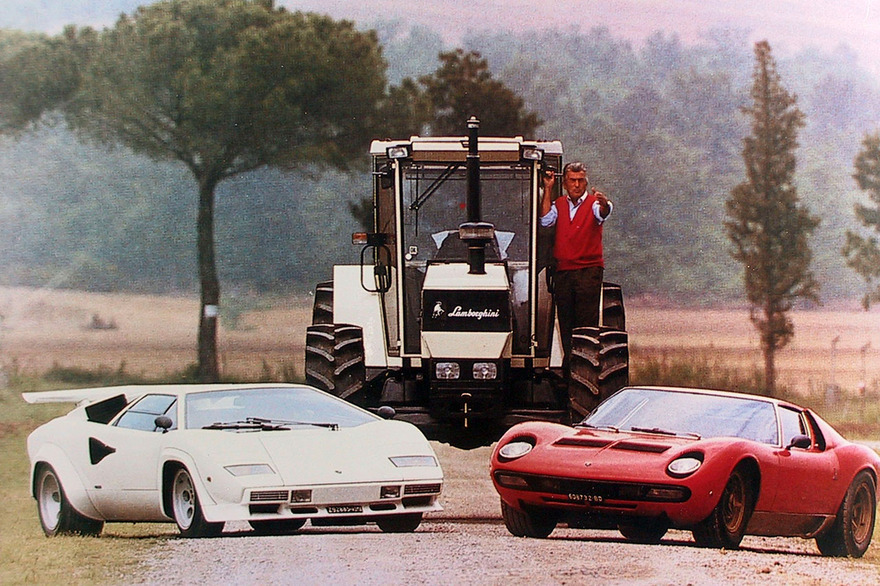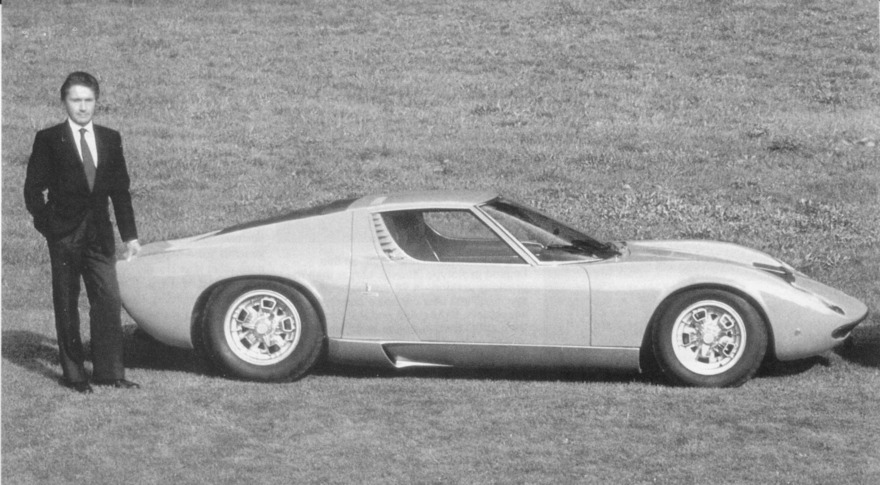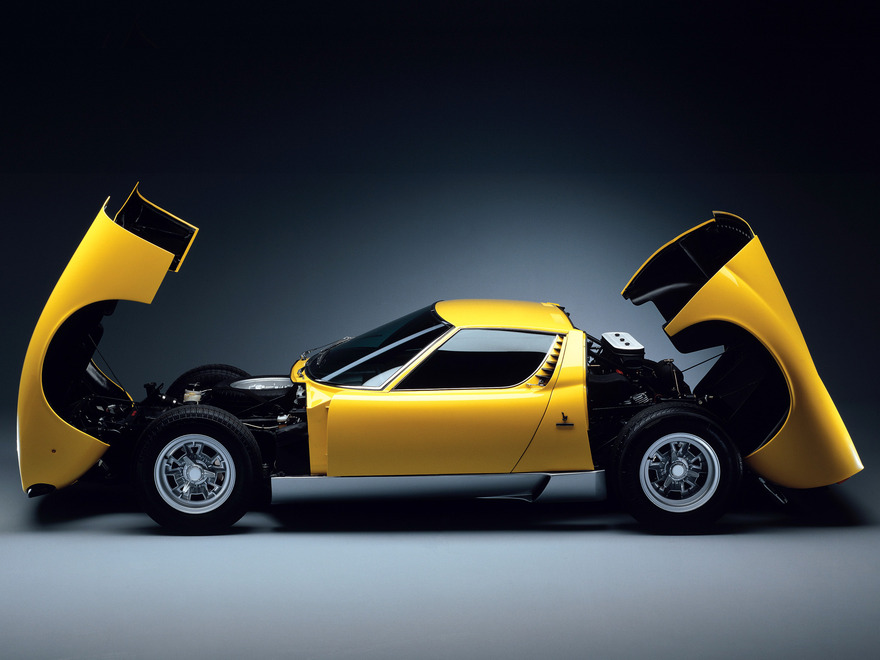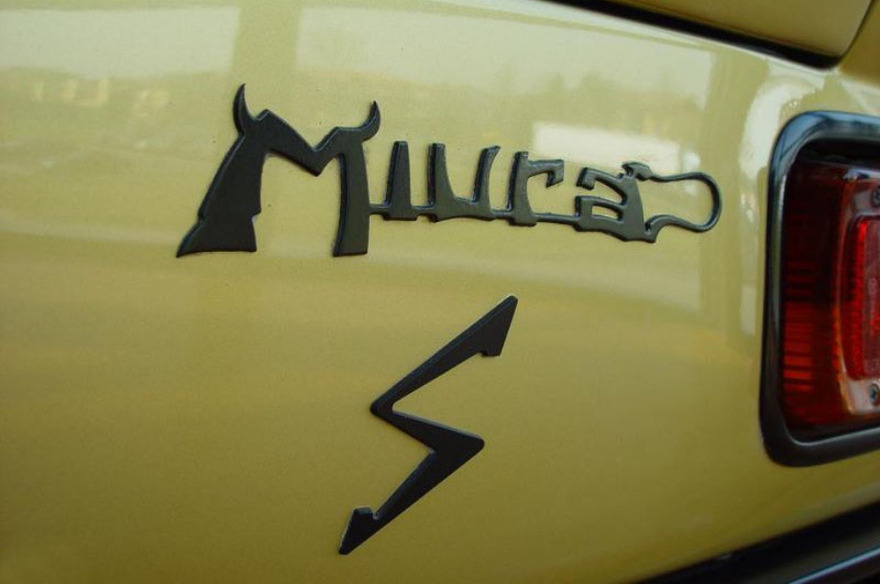A masterpiece created by Marcello Gandini attracts you like a magnet. Framed by black lashes, stylish headlights make it look like a fashionmonger of the 60s. Lamborghini Miura is a stunning vehicle with gorgeous curves designed by a 25-year-old man. A thick layer of black mascara applied to the most beautiful “eyes” in the universe is a distinctive feature of all cars created by maestro Gandini. The word “supercar” was first used by a famous automobile journalist L.J.K. Setright in his article for the Car magazine to describe this particular vehicle.
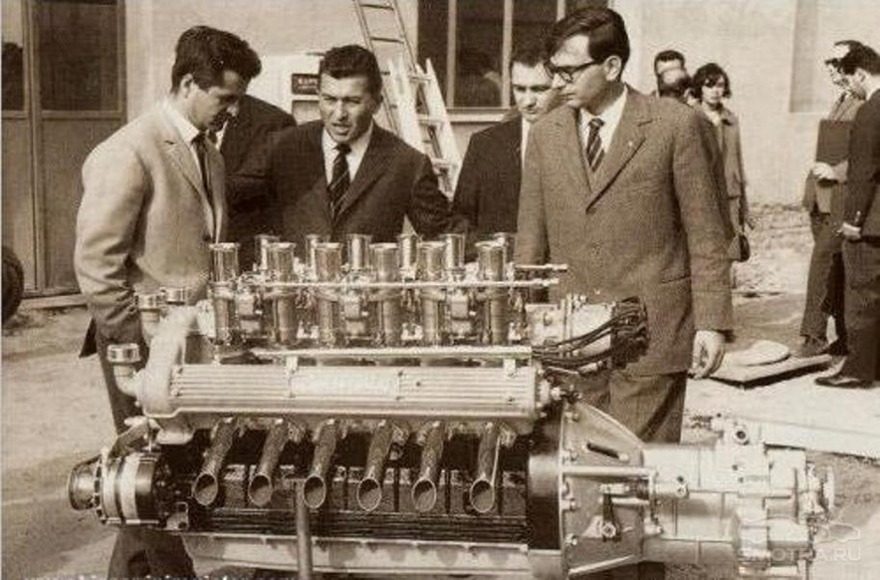
But like all Italians inclined to mechanics, the first thing he created after the war, apart from tractor, was a racing car. Ferruccio took a side-valve Fiat 500 engine and increased its displacement up to 750cc and then added the overhead-valve cylinder head made of bronze. This is how the story of Lamborghini sports cars began. At the Turin Auto Show Lamborghini, which had become a famous tractor manufacturer in Italy by that time, unveiled its first sports car Lamborghini 350 GT. It was a two-seat coupé with traditional layout featuring a 3.5-litre V12 producing 347 hp. Its top speed reached 280 km/h and it was able to accelerate up to 100 km/h in 6.7 seconds. The company’s engineers introduced several new solutions which had never been used before. But the car also had a few drawbacks. For instance, the powerful 12-cylinder engine was not thought out properly. Not everyone liked the car’s exterior and the interior finish left much to be desired. Only 13 units were sold during the first year of its production. But later Lamborghini became the first carmaker to introduce cars with mid-engine configuration.
Ferruccio entered the car in the 1948 Mille Miglia race and was behind its wheel. Together with his co-driver they covered about 2/3 of the entire distance and then ran the car into the side of a restaurant. “I had enough of racing that day,” Ferruccio Lamborghini noted later, “I just stopped and ordered a glass of wine...”
And though he was not taking part in motor racing, fast cars were still his passion together with powerful engines and good wine. And the greatest masterpiece created by Ferruccio and his entire company was the car with the name softly purring like a wild cat.
Miura was created by a group of Lamborghini engineers who developed its design during their spare time and against the will of the company’s founder Ferruccio Lamborghini. The latter was giving preference to the production of the powerful Gran Turismo cars and not street-legal sports cars unlike his local competitor Ferrari. Gian Paolo Dallara, Paolo Stanzani, the company’s test driver Bob Wallace and Bertone designer Marcello Gandini (on photo below) created one of the most beautiful supercars in the world.
Lamborghini Miura was intended to become a super model and came as a bombshell. In the world of all these BMC cars, Sunbeams and Routemasters the white “purring cat” looked absolutely extraordinary together with its left-hand drive steering wheel...
Miura model revealed in 1965 was fitted with a 12-cylinder engine mounted directly behind the driver on a special frame. Transverse engine arrangement was used in the first Lamborghini models for the third time in the entire history of car manufacturing. This uncommon solution inspired the designers to give the car an unusual shape. Within six years after revealing the first model more than 600 units had been sold beating Ferrari in popularity. Like any other supercar, Miura was absolutely impractical. If you put the luggage in the rear compartment of the car, if might get burnt due to high engine temperature. Another criterion was its price which could not be justified. But after stepping on the acceleration pedal all its drawbacks seemed to fade and vanish in the roaring sound of the 12-cylinder engine. It looks great. It sounds great. Its power is enviable even today.
Its 4-litre engine produces 350 hp at 7000 rpm. Its maximum torque of 369 Nm is reached at 5100 rpm. But the most amazing feature of this car lies in the fact that after it stops fuel is still pumped up into four Weber carburettors preparing the car for the immediate start when stepping on the gas pedal. The world of automobiles was shocked when Miura first appeared. The price of Lamborghini Miura was $20,000 which makes $114,000 equivalent in today's money.
Its finished sleek design with incredibly well-formed body lines combined the power of a sports car and respectability. The unusual exterior of this car makes you follow it with your eyes and arouses special interest. The first striking feature is its height — a road-hugging car almost 1-metre high. The cabin of Lamborghini Miura is so low that it seems impossible to get inside. In order to open the doors one should press the door lock knob hidden in the intake louvers in its upper part and here you are. The lowest point of this car with racing character is only 10 cm from the road surface. Two major instruments are in front of the driver — a speedometer numbered to 320 km/h and a tachometer. Interesting to know is that the speedometer started only at 40 km/h. The central part of the dashboard reminds an airplane cabin. And this resemblance is further proved with a great number of switches situated on top. The shift lever corresponds to the scheme invented by the Italian manufacturers which had caught the fancy of so many car enthusiasts.
In case the passengers in Lamborghini were feeling nervous (which happened quite often) they could use both the handles and a special footing. These facilities were essential due to 277 km/h of top speed as the car was able to accelerate up to 100 km/h in just 6.2 seconds. Low ride of Miura is extremely exciting. The driver almost lies in the seat like in real racing cars of that time. The windscreen opens fascinating views. The driver is practically floating above the road. The legs have to be set on both sides of the steering wheel. Miura handling is quite comfortable. It has a great steering wheel for a car of the 60s. And the brakes are good as well. The weak point of this model is gear shifting. Changing gears is a rather complicated task for a driver who is unfamiliar with this car — it requires a lot of experience and skills.
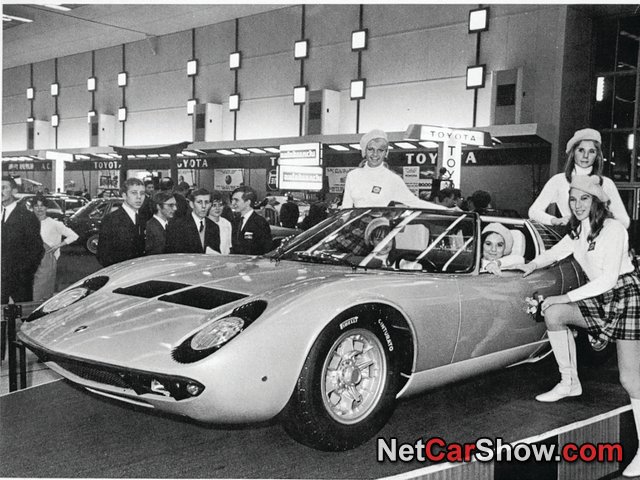
In 1970 the car was sent back to Italy for rework. Lamborghini Miura received right-hand drive, stiffer suspension, wider wheels and a new bright green colour. The engine was upgraded up to the S modification and was featuring a 20-hp increase. A few other modifications of this model appeared over the course of production of Lamborghini Miura — P400, P400S, P400SV, P400 Jota, P400 SV/J, Roadster and P400 SVJ Spider. The last Lambo Miura rolled off the production line in 1972.
It is generally thought that it was Miura which marked the beginning of the mid-engined two-seater super high-speed car trend. In the early days of its production it was the fastest street-legal car!
Photo: www.autotuni.ru, www.cars-10.com, www.lambocars.com, www.conceptcarz.com, netcarshow.com, www.kldconcept.com

